What Is Evergreen Content?
Evergreen content is content that remains relevant over a long period and requires few updates to continue providing value for readers.
This type of content is called “evergreen” because it focuses on core topics that rarely change.
An example of evergreen content is Backlinko’s link building guide because the core principles rarely change and demand for the topic is consistent.
That means this guide keeps driving consistent traffic to their blog, which you can see based on this chart from Semrush’s Domain Overview tool.

On the other hand, an article about SEO trends isn’t evergreen. Because trends change from year to year.
Backlinko’s SEO trends post needs periodic updates to remain relevant. Which is why you see some dips in traffic over the years.

Seasonal Content vs. Trending Content vs. Evergreen Content
Seasonal content is relevant at specific times of the year, such as around holidays or during particular seasons.
For example, Google Trends data for “black friday marketing” consistently shows sharp rises and falls.
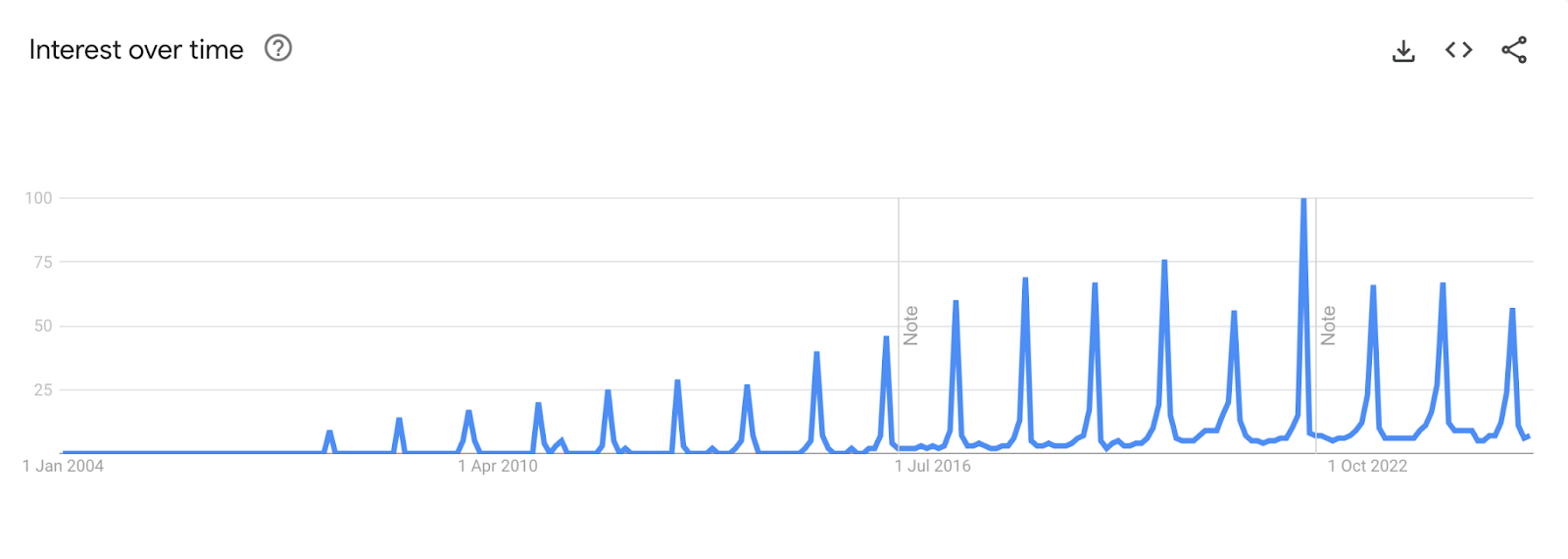
Trending content is centered on topics that rapidly gain attention but fade fast.
For example, the Google Trends graph for “covid” shows a sudden spike followed by a decline.
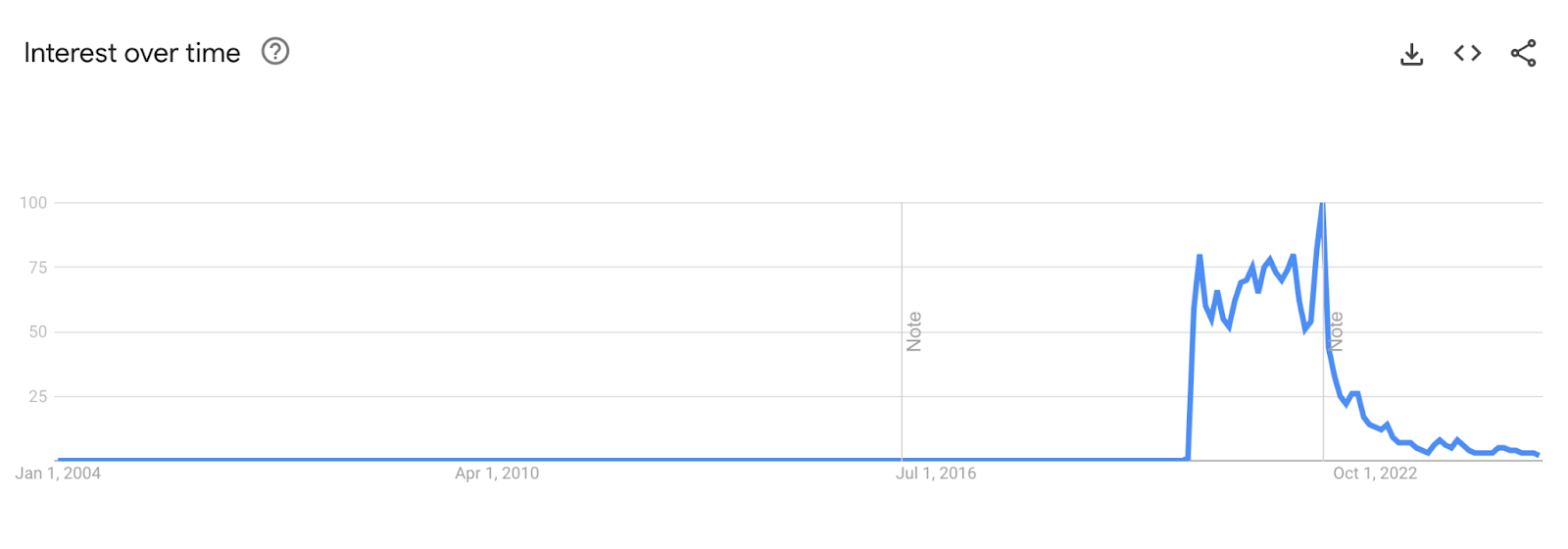
Evergreen content remains valuable year-round and over time. Because it focuses on topics that are consistently popular.
The Google Trends graph for “seo” shows this is a topic you can create evergreen content around.
Formats and Examples of Evergreen Content
Some of the most widely used formats for evergreen content are:
- How-to articles and tutorials: Help users complete a specific task or learn new skills. Example: “How to Write a Resume (Examples + Guide).”
- Listicles and tips: Present information in a list format. Example: “The 8 Best Exercises for Weight Loss.”
- Ultimate guides: Provide a comprehensive resource on a topic, usually covering all the important fundamentals. Example: “On-Page SEO: The Definitive Guide.”
- “What is” explainers: Offer a focused explanation of a particular topic. They’re typically not as detailed or comprehensive as ultimate guides, making them perfect for readers seeking quick information. Example: “What Is Venture Capital?”
- Free tools: Provide a free tool or a limited version of a paid tool. Example: “Standard Deviation & Variance Calculator.”
Benefits of Evergreen Content
- Less maintenance: Evergreen content needs minimal updates to remain relevant
- Consistent traffic: Evergreen content can attract visitors for months or even years after publication
- Higher ROI: You can create evergreen content once and refresh it occasionally, generating ongoing traffic, leads, and sales over time
How to Create Evergreen Content: 4 Tips
1. Pick Relevant, Timeless Topics
Choose topics based on concepts or common questions in your niche that don’t change quickly and that people search for consistently.
Some examples of timeless topics include:
- What is compound interest?
- How to write a resume
- Time management ideas
Use Semrush’s Keyword Magic tool to find relevant keywords (words or phrases people type into search engines) with consistent historical demand.
Simply launch the tool, enter a broad term related to your niche (e.g., “influencer marketing”), select your target country, and add your domain to get personalized metrics for your site.

You’ll see a list of related keywords along with important metrics like:
- Volume: How many monthly searches the keyword gets
- Search intent: The main reason people search for the keyword
- Personalized keyword difficulty (PKD %): How hard it is for your specific site to rank in the top 10 Google results for a given term
- Potential traffic: An estimate of how much traffic a particular keyword can bring to your site
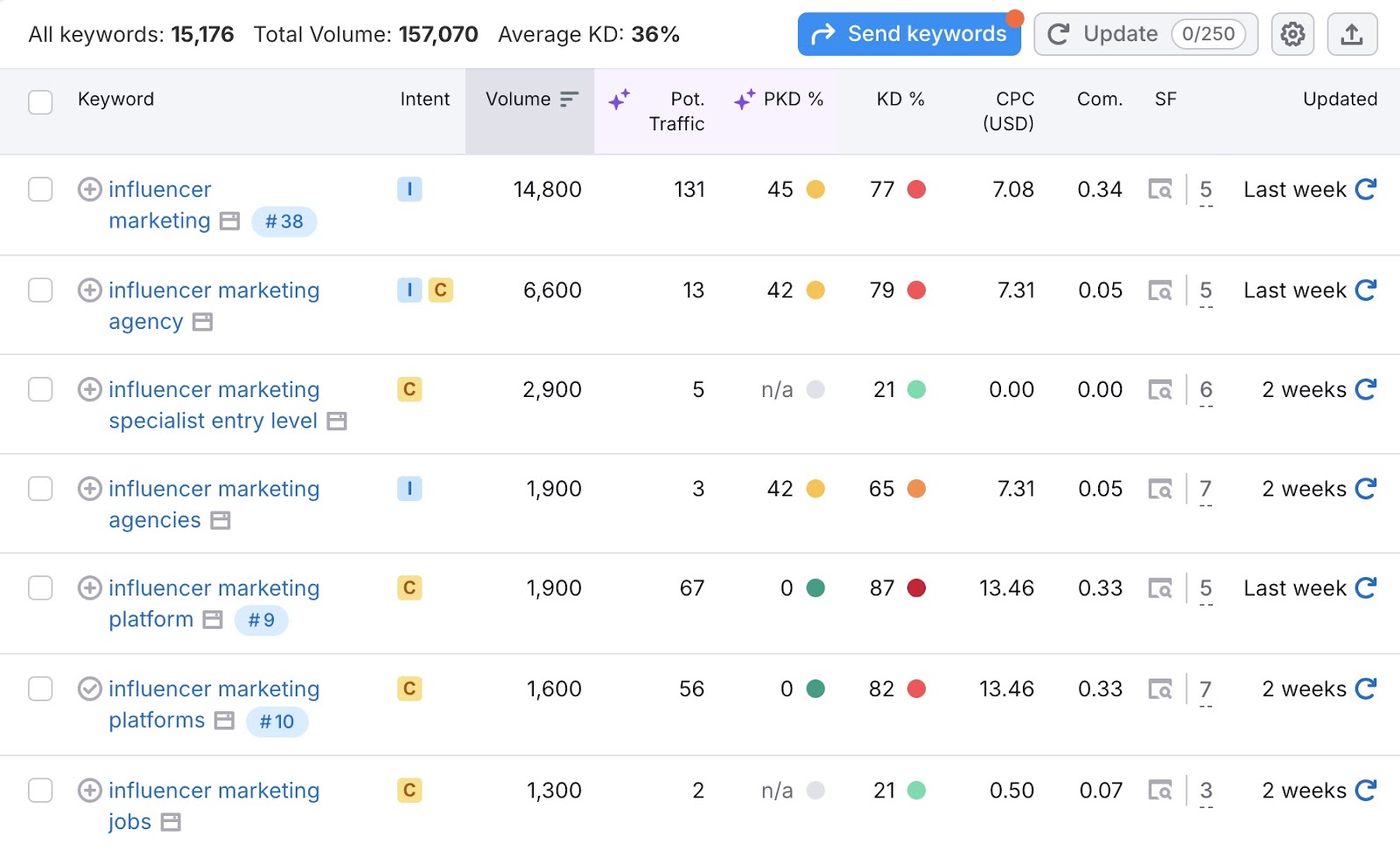
Next, add the “Trends” column by clicking the gear icon and selecting the checkbox. (It’s off by default.)
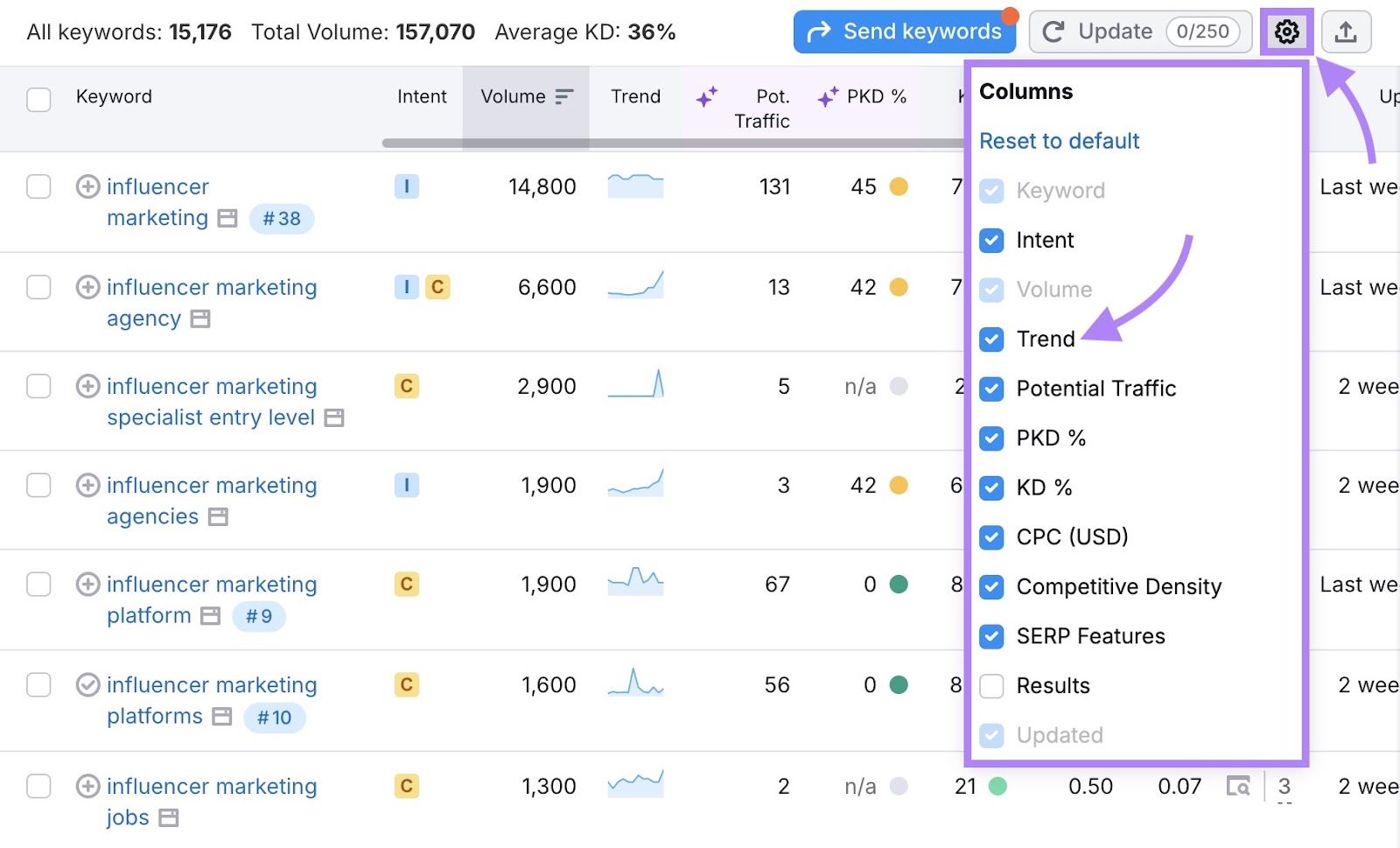
This shows how the keyword’s search volume has changed over the past 12 months.
Like this:
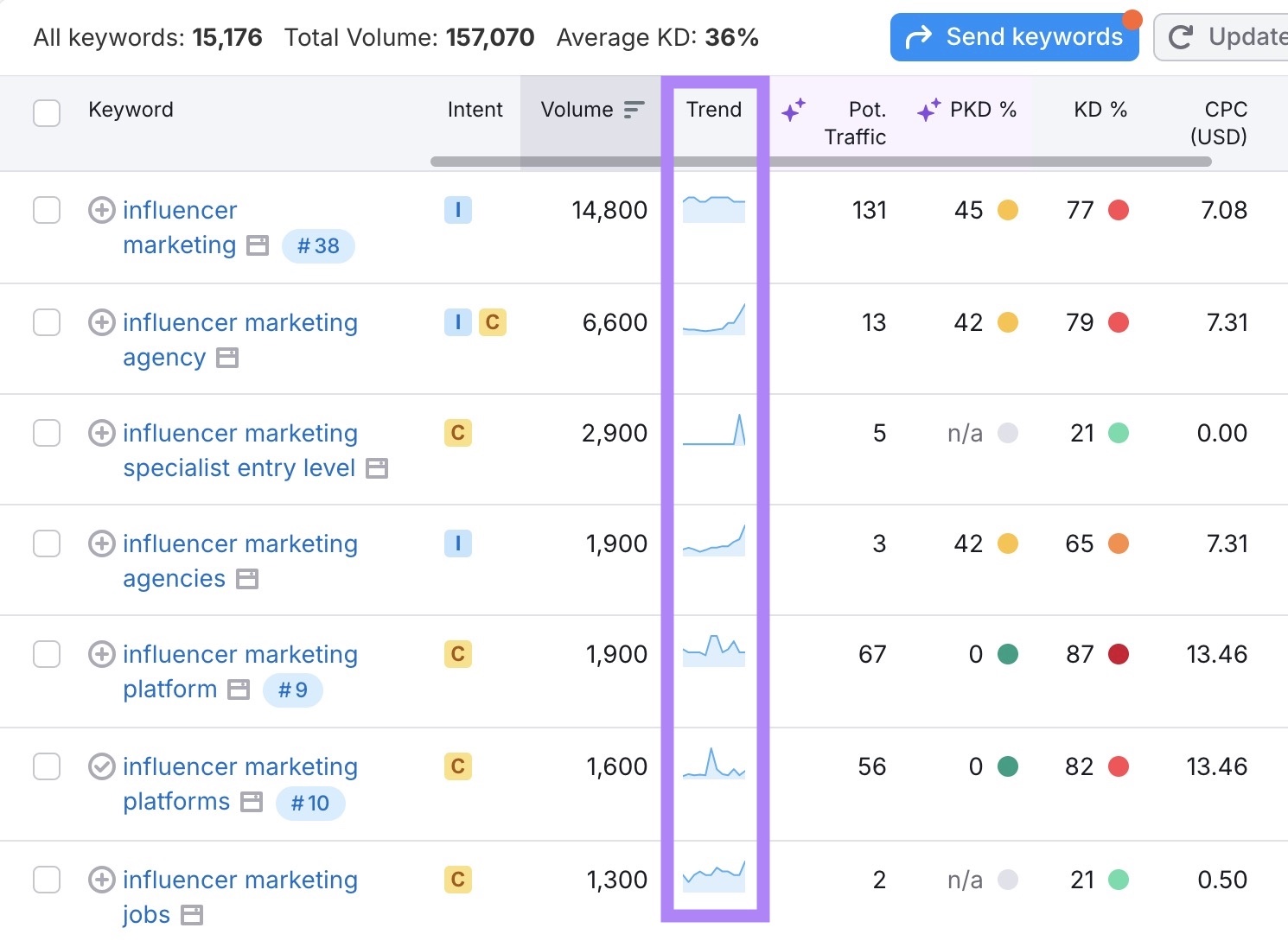
Look for keywords with consistent or rising search volume to identify evergreen topics. And make sure those topics align with your audience's interests and needs.
For instance, “tiktok influencer marketing” has had consistent search demand for the past 12 months:
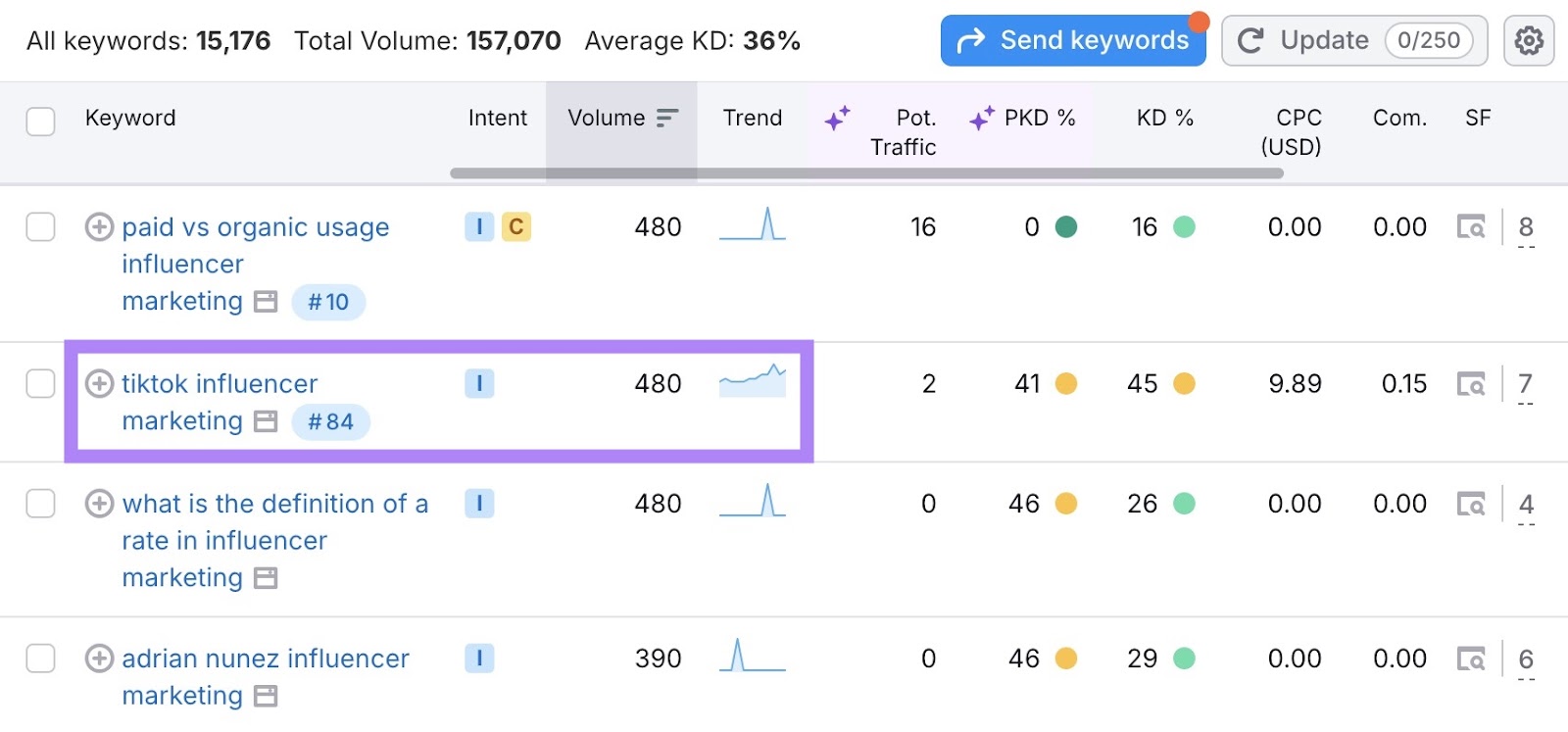
Next, examine the kind of content ranking on the search engine results pages (SERPs).
To start, simply enter the keyword into Google and analyze the top-ranking results.
The top-ranking results for “tiktok influencer marketing” are explainers and ultimate guides, which tells you users are searching for informational content.

Once you find suitable evergreen topics, create high-quality content around them.

2. Target ‘What Is’ Keywords
“What is” question keywords begin with phrases like “what is” or “what are.” These queries remain evergreen because they address core topics that people consistently search for over time.
For example, “what is a home loan” can attract steady traffic to your site if it ranks well, without requiring frequent updates.

Use Semrush’s Keyword Magic Tool to find these “what is” keywords.
Launch the tool, enter a broad term related to your niche (e.g., “home loan”), and select your target country.

The tool then shows a list of related keywords with relevant metrics.
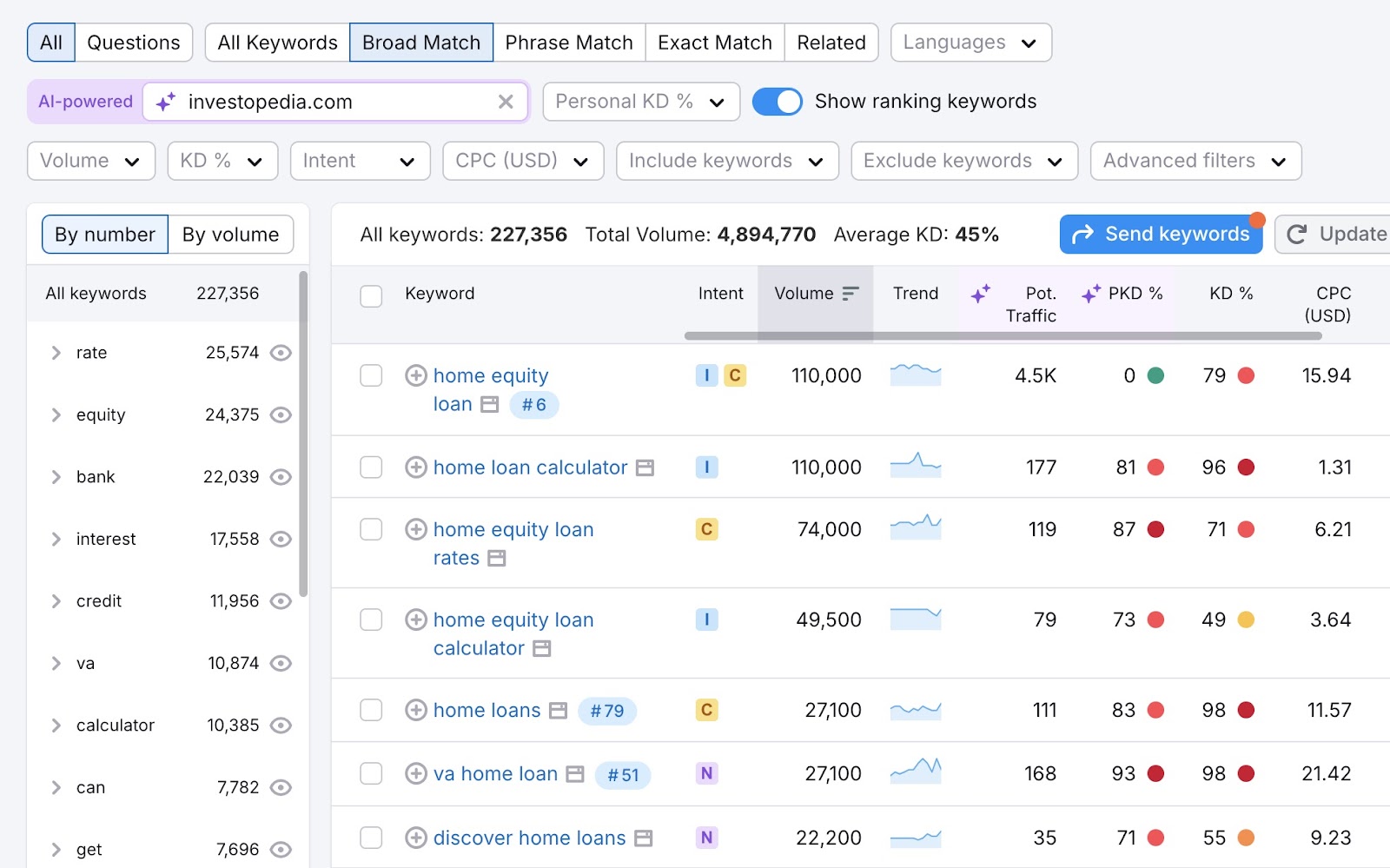
Turn on the “Questions” filter to discover more “what is” or “what are” queries.
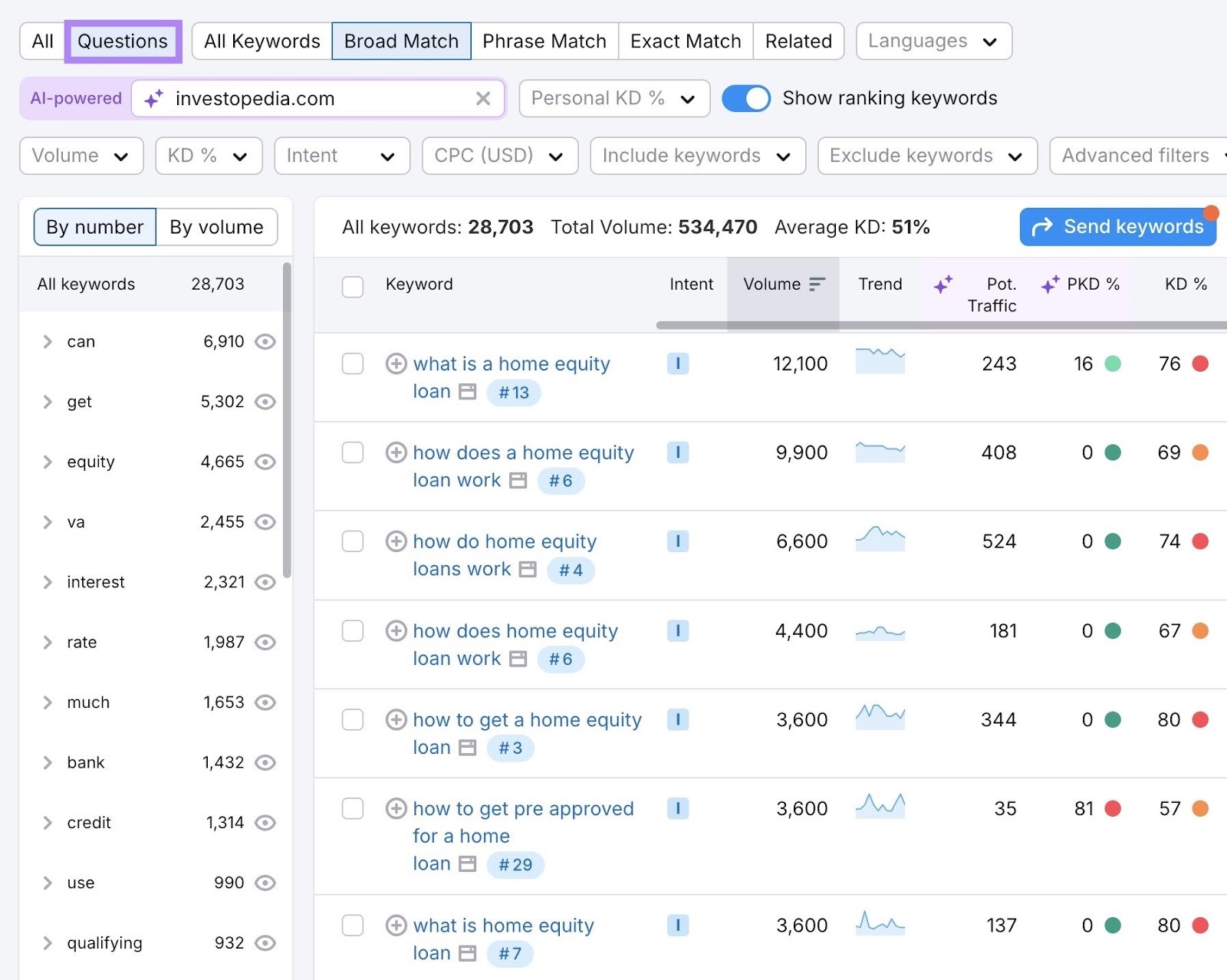
Apply additional filters to refine your search:
- PDK % set to “Easy” or “Very Easy” helps identify keywords that your site has the best chance of ranking for
- Volume set to at least “1,000” focuses on queries with higher monthly search volumes
Use all three filters together to find low-difficulty question keywords that have high search demand.
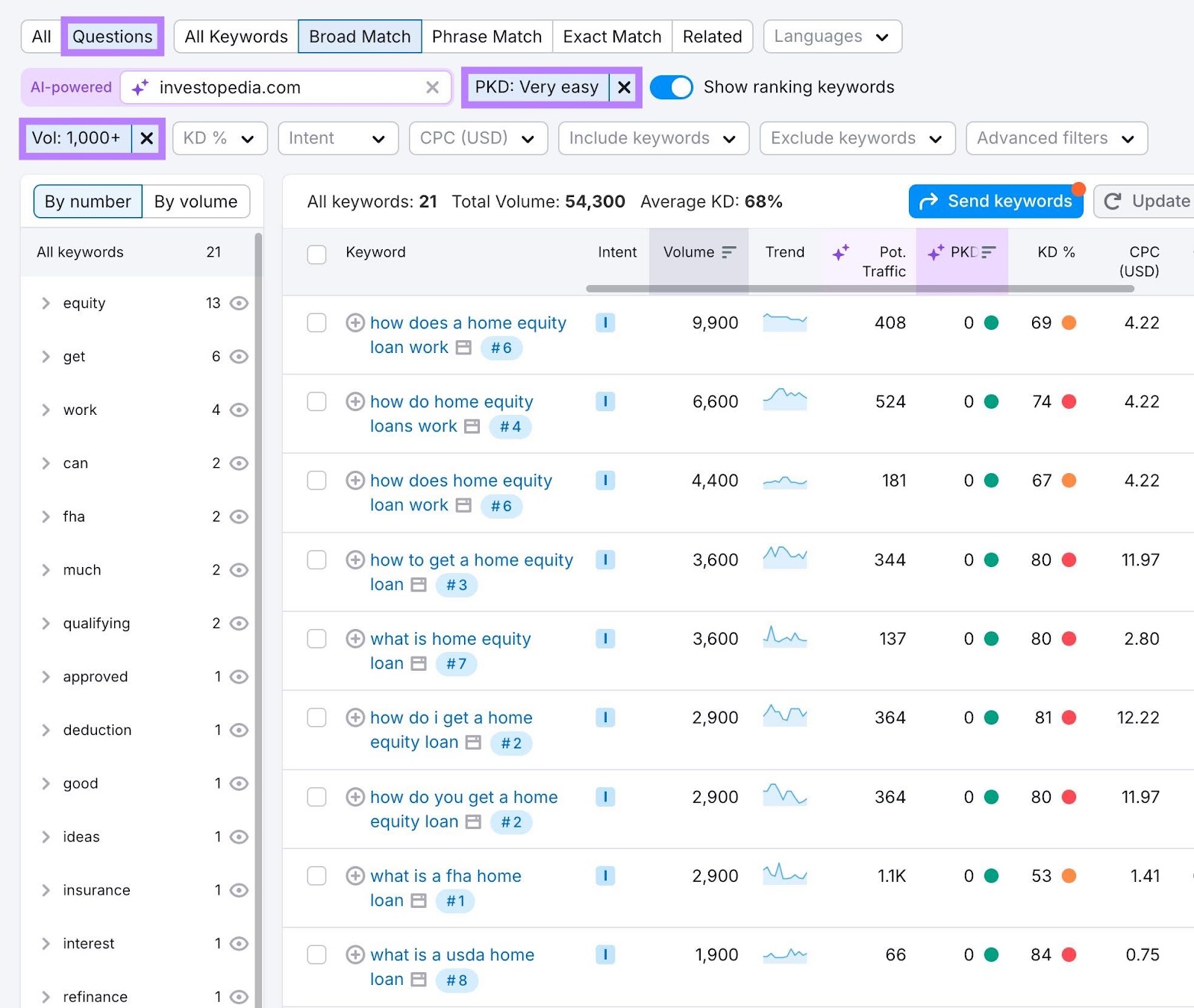
Save the most relevant question keywords and create high-quality content around them to improve search engine rankings.
3. Write High-Quality Content
Conduct thorough research and include accurate information from the start. If your piece has errors or missing details, you’ll have to revise it soon.
For example, a guide titled “What Is Compound Interest?” can stay evergreen if:
- Its definition is precise
- Its explanation is clear
- Its examples are timeless
To keep updates minimal and content quality high, follow these tips:
- Use reliable sources: Base your research on authoritative data. Avoid outdated studies or purely trend-based information.
- Provide clear definitions: Ensure concepts are easy to understand. Check key points with trusted references.
- Consult experts: Seek insights from multiple specialists. Avoid using personal or unverified opinions.
- Choose timeless examples: Use illustrations that remain relevant for years
- Write simply: Keep your tone straightforward and minimize jargon
- Avoid pop culture references: Steer clear of memes, time-sensitive jokes, or trends to keep content timeless
Use Semrush’s ContentShake AI app to generate initial drafts.
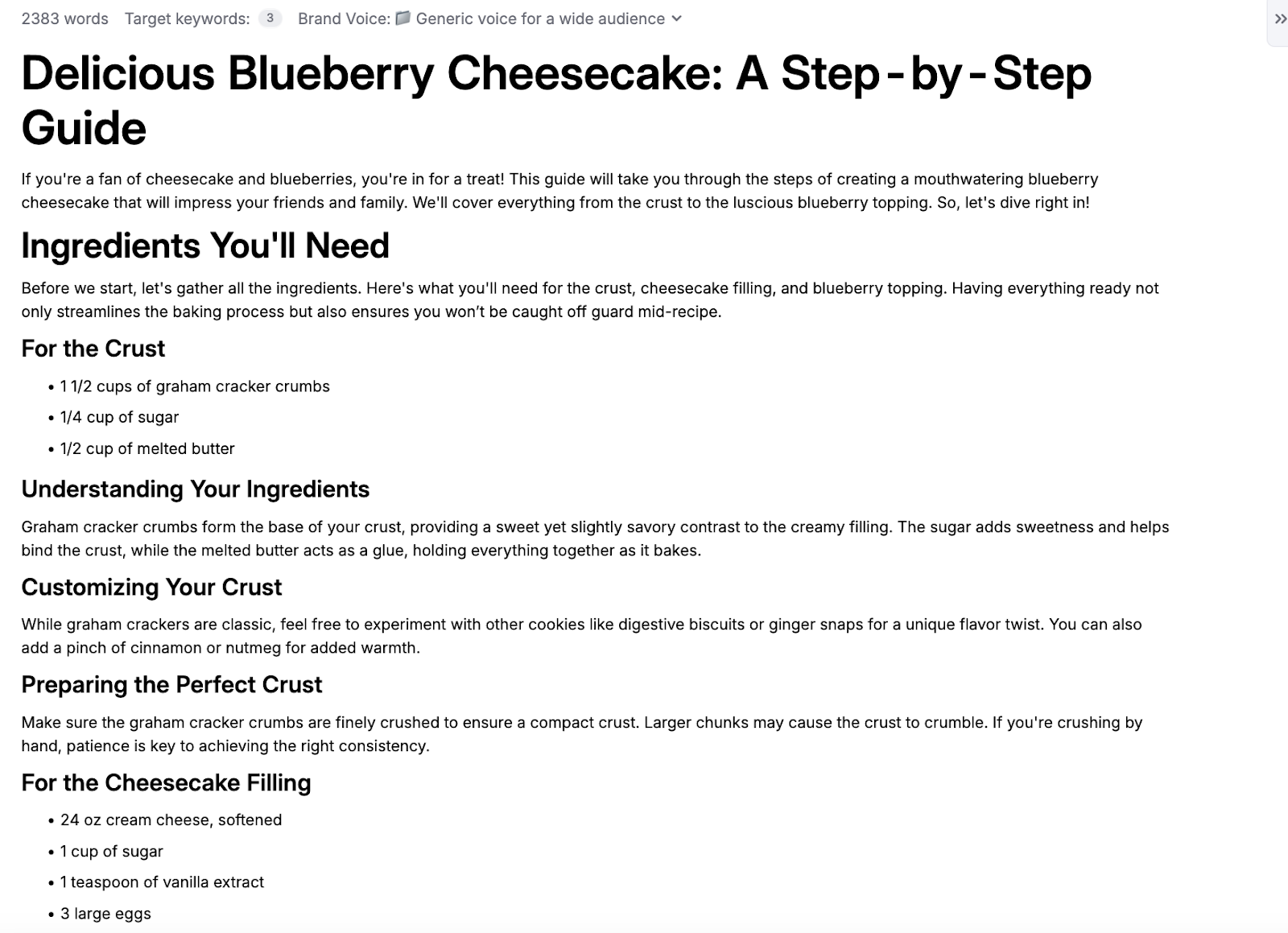
These drafts aren’t publish-ready but can serve as your starting point.
Refine them with comprehensive edits to boost readability, add depth, and include relevant examples.
4. Update Your Content Occasionally
Search engines tend to reward content that reflects the most current information. By occasionally updating your evergreen posts, you can maintain or even enhance their search engine rankings.
How can you find content that needs updating?
Track keyword rankings and watch for any drops in positions with the Semrush Position Tracking tool.
Enter your domain and click “Set Up Tracking.”

Choose your search engine, device, and country to track.

Add the keywords you want to monitor, then click “Start Tracking.”

Go to the “Overview” tab for a snapshot of your keyword positions, ranking changes, and more.

If your rankings start to decline, refresh your content by:
- Replacing outdated information: Update statistics, research, and case studies with current data
- Adjusting product-related information: Update screenshots and instructions if interfaces have changed. Remove references to discontinued products or services.
- Improving readability: Break up long paragraphs, add bullet points, and refine formatting to make content easier to skim
- Enhancing on-page SEO: Refresh title tags, meta descriptions, headings (H2s), and keywords. Strengthen internal linking for better rankings
- Adding expert insights. Include quotes or comments from specialists to increase credibility and align with Google’s E-E-A-T guidelines.
How to Promote Your Evergreen Content
Promote your evergreen content regularly on different channels to reach a broader audience.
Here are a few ways:
- Share on social media: Repurpose your content into infographics, short videos, or carousels. Post them on social platforms and include a link back to the original content.
- Leverage email marketing: Feature evergreen content in newsletters or set up automated email sequences. Introduce new subscribers to your top-performing content.
- Tap into guest blogging: Contribute to relevant sites and include links to your evergreen content. This helps reach and build authority.
- Try content syndication: Republish articles on high-traffic platforms like Medium or LinkedIn to attract new readers
- Use paid ads: Promote evergreen content through Google Ads or social media ads
Track the Your Evergreen Content’s Performance
Monitor how your evergreen content performs over time.
Use tools like:
- Position Tracking: Check keyword rankings and spot any decline that may need attention
- Organic Traffic Insights: Review how users find your content in search results and identify growth opportunities
- Backlink Analytics: Track new links pointing to your evergreen content and measure increased authority
By analyzing these metrics regularly, you can make data-driven updates to keep your evergreen content high-performing.


